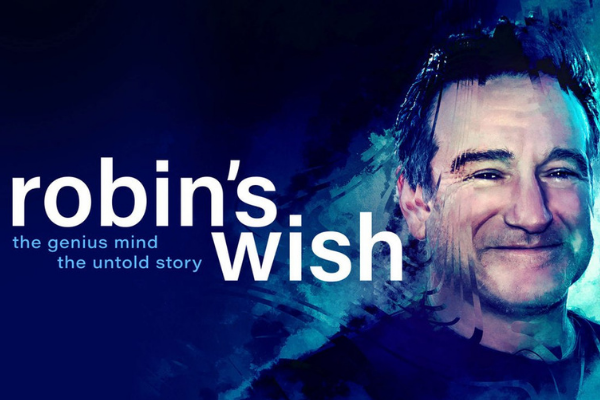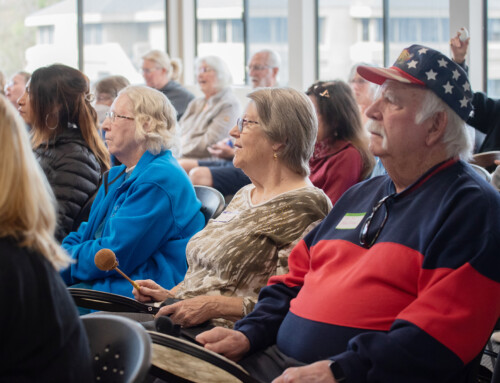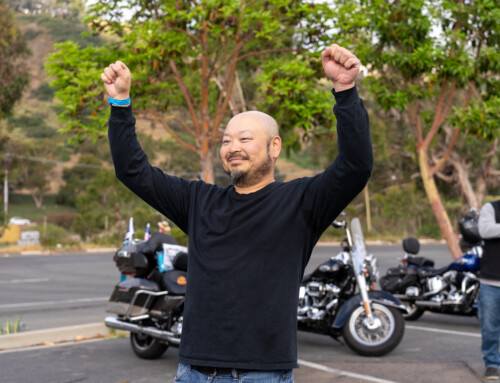The beloved actor and comedian Robin Williams captivated audiences with genius improvisation skills. But during his later years, those closest to him noticed differences in his behaviors and personality. The man known for his larger-than-life stage persona seemed instead rather melancholic and detached. Robin was described by his performance colleagues and interviewers as quick-witted and always anticipating the next joke, leaving many unable to catch up. This was a far cry from the Robin who struggled to remember lines or words while filming Night at the Museum 3.
RELATED | Demystifying Dementia in Pop Culture
In 2014, Robin died from suicide, leaving his wife, Susan Williams, along with many others heartbroken and dumbfounded. He had past problems with substance abuse and struggled with depression, but was behaving in strange ways that Susan couldn’t understand. It wasn’t until a brain autopsy that things finally made sense when it was discovered that Robin Williams actually had one of the most severe cases of Lewy Body dementia (LBD) ever seen.
The story of what really happened to the star that resulted in this tragic end was told in the recent documentary Robin’s Wish.
Lewy Body dementia is a type of dementia that is “progressive, irreversible, and always fatal”, according to expert Dr. Bruce Miller. Abnormal deposits of the protein alpha-synuclein form masses called Lewy bodies that damage the brain. The disease increases anxiety, can cause hallucinations, mood swings, may negatively impact REM sleep, and can result in fluctuating levels of alertness and attention. Lewy body dementia can be hard to diagnose because Parkinson’s disease and Alzheimer’s disease cause similar symptoms. Scientists think that LBD might be related to these diseases, or that they sometimes happen together.
RELATED | Learn more about Lewy Body & other types of dementia
“It amazed me he could walk at all…no area of his brain was left untouched [by Lewy bodies], “ Miller explains in the documentary.
Robin’s wife Susan explained how his night terrors and hallucinations frightened her and were a huge source of confusion. Doctors gave the improper diagnosis of Parkinson’s, which is often confused with LBD. Robin in the beginning stages even asked his doctors: “Am I schizophrenic? Do I have Alzheimer’s?” There was a self-awareness there. But only he knew at the time the extent of his symptoms.
Robin’s director and crew members from the Night at the Museum 3 had felt something was off. Once at 2 AM Robin even called the director, Shawn Levy, begging for some sort of relief for the crippling self-doubt and anxiety he’d felt knowing his level of performance on set wasn’t up to standard.
“He would ask, ‘Was any of that usable?’ I did have to work harder editorially, but Robin just seemed to believe it unforgivable,” Levy shares.
The impact of brain damage on Robin’s mental health was outside of his control. Susan hopes sharing his story with the world will bring more awareness and support for those dealing with LBD.
“I believe there’s a disconnect between mental health and neurology,” she mentions. “If we’d had the accurate diagnosis of LBD that alone would have given him some peace.”
Robin was found on August 11, 2014 in his home in Northern California. Robin brought so much joy and laughter to the world with his incredible talent. When discussing his legacy with his wife, his final selfless wish was this: “I want to help people be less afraid.”
To learn more about memory loss, contact our Clinical Care Coaches by clicking here or calling 858.492.4400. We’re here to help!





